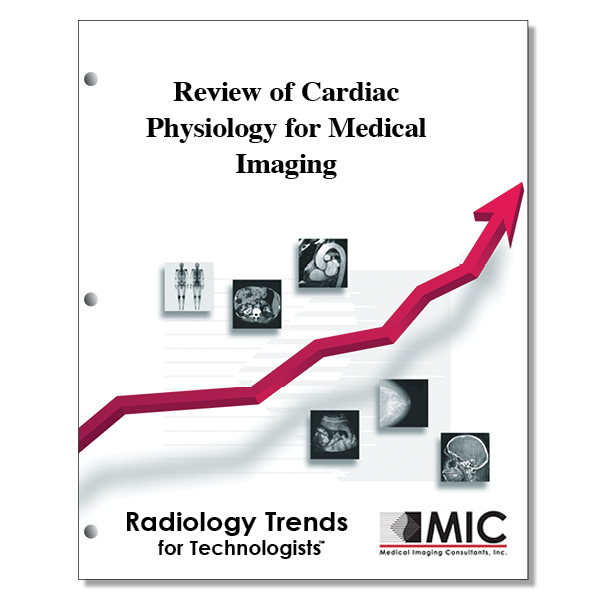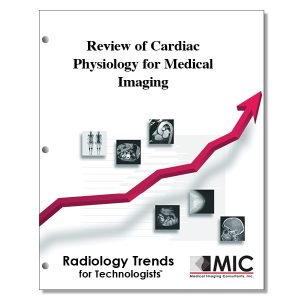

Review of Cardiac Physiology for Medical Imaging
An overview of the language and concepts of cardiac physiology.
Course ID: Q00460 Category: Radiology Trends for Technologists Modalities: Cardiac Interventional, CT, MRI2.25 |
Satisfaction Guarantee |
$24.00
- Targeted CE
- Outline
- Objectives
Targeted CE per ARRT’s Discipline, Category, and Subcategory classification for enrollments starting after January 28, 2025:
[Note: Discipline-specific Targeted CE credits may be less than the total Category A credits approved for this course.]
Cardiac-Interventional Radiography: 0.75
Procedures: 0.75
Diagnostic and Electrophysiology Procedures: 0.75
Computed Tomography: 1.50
Procedures: 1.50
Neck and Chest: 1.50
Registered Radiologist Assistant: 1.50
Procedures: 1.50
Thoracic Section: 1.50
Outline
- Introduction
- Background of Important Concepts in Cardiac Physiology
- Cardiac Cycle
- Left Ventricular Systole
- Left Ventricular Diastole
- Pressure-Volume Loops and Cardiac Physiology
- Dilated Cardiomyopathy
- Hypertrophic Cardiomyopathy
- Restrictive Cardiomyopathy
- Cardiac Cycle
- Applying Cardiac Physiology Principles to Radiology
- Measuring Cardiac Volumes and Myocardial Mass
- Physiology of Valvular Stenosis
- Aortic Stenosis
- Mitral Stenosis
- Physiology of Valvular Insufficiency
- Aortic Insufficiency
- Mitral Insufficiency
- Physiology of Cardiac Shunts
- Heart Rate and Cardiac Gating
- Conclusion
Objectives
Upon completion of this course, students will:
- describe when left ventricular systole occurs
- express what causes the aortic valve to open
- choose the duration time of isovolumetric contractions
- recall the definition of peak systolic pressure
- define stroke work
- recognize the components of the Wiggers diagram
- define stroke volume
- define ejection fraction
- explain what affects cardiac output
- define preload
- compare dilated, hypertrophic, and restrictive cardiomyopathy
- name the basic cardiac volumes quantified by a radiologist
- differentiate between imaging procedures for measuring cardiac volume and myocardial mass
- apply the formula for calculating myocardial mass
- describe valvular stenosis
- apply the formula for calculating blood flow to determine valvular stenosis and valvular regurgitation
- recognize the modified Bernoulli equation
- compare cardiac CT and MR imaging for measuring valve area
- assign values to mild, moderate, severe, and critical aortic stenosis
- recall areas of the heart affected by mitral valve stenosis
- assign values to mild, moderate, and severe mitral valve stenosis
- recall blood flow from the right side of the heart
- explain the regurgitation fraction
- define regurgitation percentages
- explain aortic valve insufficiency
- explain mitral valve insufficiency
- state how cardiac shunts occur
- list the most common left-to-right cardiac shunts
- recall ratios denoting the possibility for significant hemodynamic compromise
- compare imaging techniques for measuring the ratio of pulmonary to systemic blood flow
- describe diastole at a resting heart rate of 70 beats per minute
- name the time interval of one cardiac cycle
- differentiate between electrocardiographic synchronization techniques
- list dose reduction techniques for cardiac CT
- understand how different heart rhythms can complicate cardiac MR and CT
